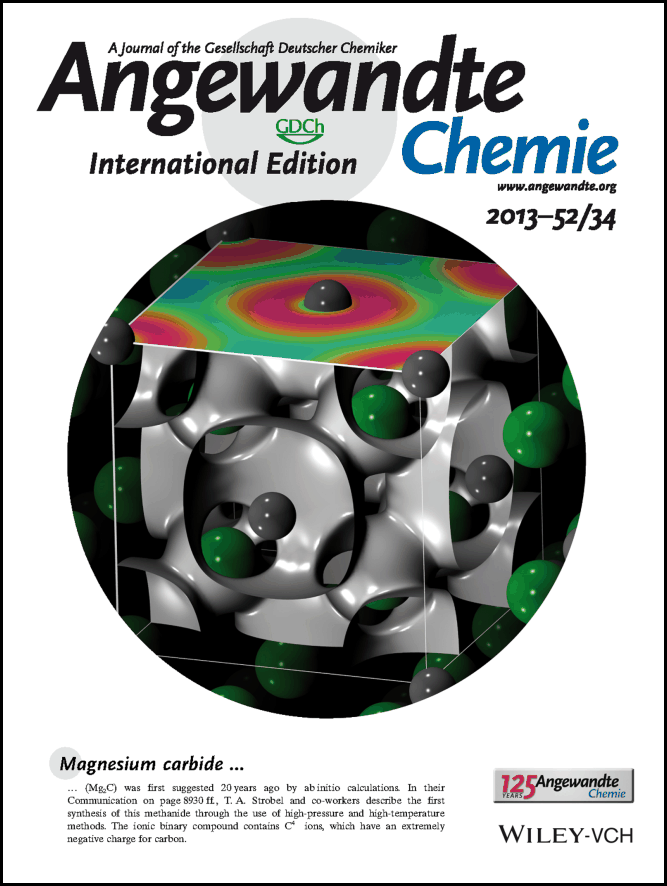Supercharged Carbon
September 10, 2013
A research team from the Geophysical Laboratory, including Oleksandr Kurakevych, Timothy Strobel, Duck Young Kim and George Cody, has reported the synthesis of an ionic semiconductor, Mg2C, under high-pressure, high-temperature conditions, which is fully recoverable to ambient conditions.
In Mg2C, carbon becomes an anion with an extremely negative charge of 4e-. Purely ionic sp3 carbon in Mg-C carbides, namely C4- anions in Mg2C, was theoretically suggested by Marvin Cohen and colleagues at UC Berkeley in 1993, however, its experimental realization has not been reported until now.
The research team has a strong momentum to find novel metal-carbon compounds under extreme conditions. Motivated by their theoretical calculations predicting Mg2C formation above 15 GPa, they successfully synthesized the high-symmetry structure. This ion has sp3 bonding nature and thus, this finding completes a trilogy of sp1/sp2/sp3 bondings known in Mg-C compounds.
Unlike previously reported Be2C, Mg2C is a fully ionic semiconductor, producing methane gas (CH4) when hydrolyzed by the moisture in air. In the accompanying illustration, each carbon atom (grey colored balls) is located at fcc sites and magnesium atoms (green color balls) sit at the tetrahedral sites. The isosurface of charge density (metallic skin) is in a spherical shape, indicating the bonding nature could be assigned to be ionic or covalent. The color map on the top slice of the Mg2C unit cell shows there are no localized electrons between carbon atoms and confirms the ionic nature of the bonding.
"It is quite common to find unusual compounds under extreme conditions, especially in metal-carbon systems. We may even expect to stabilize high-pressure phases at ambient conditions, as is the case for Mg2C," said Kim.
"The recoverable nature of the sp3 C4- anion may open entirely new possibilities for the solid-state synthesis of new advanced materials," remarked Strobel.


